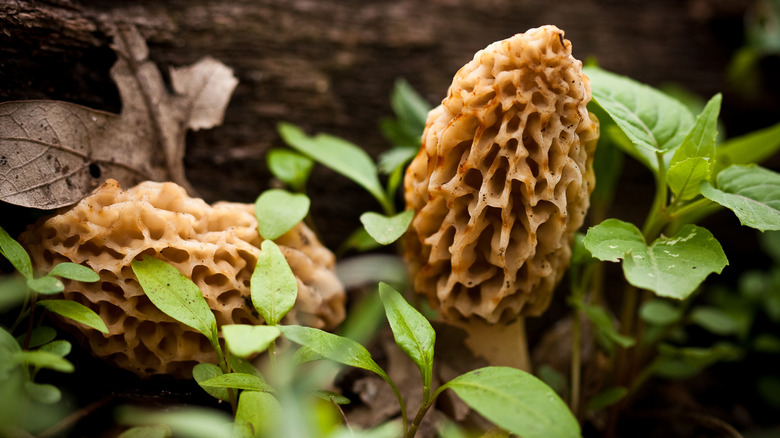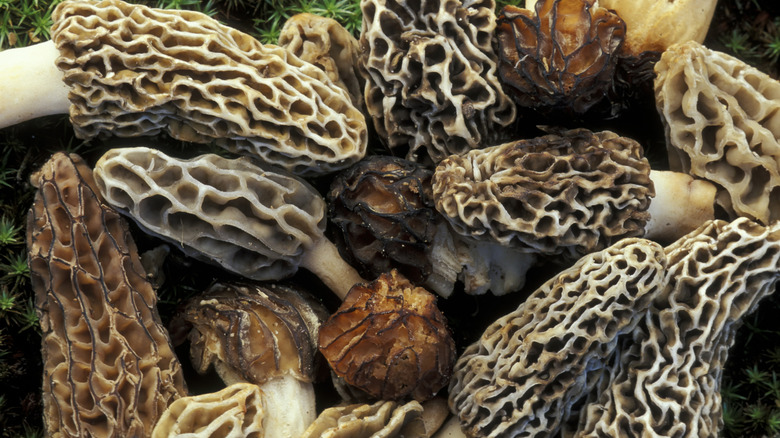Why Morel Mushrooms Are Called Molly Moochers In West Virginia
Edible mushrooms make for an umami addition to pasta or egg dishes, such as a mushroom and leek quiche – there are even mushrooms that taste like chicken. One of the most prized, morels are an edible mushroom found in the wild. They sport a spongy, porous, oblong cap and are considered a culinary delicacy because of their scarcity. Morel mushrooms poke through the damp earth for a brief period every spring. While not impossible to cultivate, the fungus is infamously tricky to farm and is usually harvested by intrepid foragers who uncover the coveted morsel at the base of oak, aspen, elm, poplar, ash, and apple trees.
While they can be found across most of the country, in the American South, some snack-seekers call the mushroom a Molly Moocher. The term has its roots in West Virginia and the Appalachian Mountain region, and while fungi enthusiasts aren't certain how morel mushrooms acquired this moniker, there are a few theories.
The disputed origins of the name Molly Moochers
Morel mushrooms' formal name, "Genus Morchella," comes from the old German word "morchel," meaning mushroom — not a far jump from the word "moocher." "Mooching" can also be another word for moseying, wandering, or moving slowly. In the name Molly Moocher, this could refer to the slow, studied process of hunting morels.
Another possible origin lies with the legend of Revolutionary figure Molly Pitcher, who was likely an amalgamation of real women, including Mary Ludwig Hays. The heroic legend represented the women who offered support to Revolutionary War troops by delivering water during battle. Similarly, morel mushrooms appear in spring and offer fresh relief after a season of scarcity; they might have been named after the legend. If you find yourself making a batch of Molly Moochers this spring, be sure to avoid basic mushroom cooking mistakes for a tender, flavorful treat.

